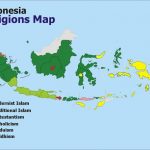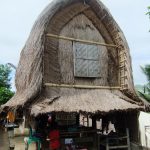THE TENGGER PEOPLE OF MOUNT BROMO
Region: East Java
Location: Bromo-Tengger-Semeru National Park
How to get there: Fly to Surabaya and hire a private taxi or take a train to Probolinggo and go by local bus
Région: Java Orientale
Localité: Parc National Bromo-Tengger-Semeru
Y aller: Volez sur Surabaya et prenez un taxi ou prenez un train pour Probolinggo et continuez en bus local

The Tengger People is an ethnic group of Hindu religion who lives in the area around the Bromo-Tengger-Semeru National Park. The park offers a spectacular landscape of six volcanoes including Mount Bromo, the most popular and the spiritual heart of the area, and Mount Semeru, the highest mountain in Java at 3,676 mt. The Tenggerese arrived more than 500 years ago after the collapse of the Majapahit Empire, making their new home in this inhospitable land. Rugged volcanic peaks, gravel plains and a sea of sand are in fact characteristic of this area, which covers more than 5,000 hectares and includes four lakes and fifty rivers. In this stunning lunar-type environment, the Tenggerese maintain their Hindu and animist traditions, and walking up the steep slopes of the volcanoes witnessing the Tengger horsemen riding to the caldera is a must-do experience. Cemoro Lawang, the village where most of the 600,000 Tenggerese live, is located next to the crater of Mount Tengger and offers the best views of the area.
Le peuple Tengger est un groupe ethnique de religion hindouiste qui habite la zone autour du parc national Bromo-Tengger-Semeru. Le parc offre un paysage spectaculaire sur six volcans, y compris le Mont Bromo, le volcan le plus connu et le centre spirituel de la zone, et le Mont Semeru, le sommet le plus élevé de Java (3,676 mt). Les Tenggers arrivèrent dans cette terre inhospitalière cela fait plus que 500 années, suite à la chute de l’empire Majapahit. Le paysage est caractérisé par des volcans escarpés, des plaines de gravier et une mer de sable; le parc couvre plus que 5,000 hectares et comprends quatre lacs et cinquante fleuves. Dans ce paysage lunaire, les Tenggers gardent leur traditions hindouistes et animistes; grimper les pentes abruptes des volcans et observer les Tenggers monter en cheval est une expérience à ne pas rater. Cemoro Lawang est le village où la plus part des Tenggers habitent. Il se trouve à cote du cratère du Mont Tengger et offre les meilleurs panoramas de la zone.

Tengger people
Tengger people are one of the few Hindu communities in Java, a region where most of the population is Muslim. They are believed to be the descendants of the Majapahit princes, who followed Hinduism. They typically have angular-shaped faces and are nomadic herders. Tenggerese managed to maintain their religious traditions, a blend of hindu and animist rituals and each village is represented by a dukun, a spiritual leader. The Yadnya Kasada Festival is the most important ceremony of the year. The legend says that the last descendant of the Kingdom of Tengger, was swallowed by an eruption of Mount Bromo because his parents refused to sacrifice him to the Great God. On the full moon of the 12th month (Kasada), the Tenggerese gather at the Poten, the sacred place in Mount Bromo, wearing their coloured dresses and throw offerings of fresh food and money into the caldera to appease the Great God.
Le peuple Tengger
Les Tenggers sont une des rares communautés hindouistes de Java, où la plus part de la population est musulmane. On les considère les descendants des princes Majapahit, qui étaient hindouistes. Les Tenggers ont des visages de forme angulaire et sont des bergers nomades. Ils sont réussi à préserver leur traditions religieuses, à savoir un mélange de rituels hindouistes et animistes, et chaque village est représenté par un « dukun », le leader spirituel. Le Yadnya Kasada est la cérémonie la plus importante de l’année. La légende raconte que le dernier descendent du Royaume des Tengger fut avalé par le Bromo parce que ses parents refusèrent de le sacrifier au nom du Grand Dieu. Lors de la pleine lune du 12ème mois (Kasada), les Tenggers se réunissent au Poten, l’endroit sacré du Mont Bromo, habillés avec leur vêtements coloriés et jètent dans le volcan des offrandes de nourriture et argent pour apaiser le Grand Dieu.

Bromo-Tengger-Semeru National Park
Mount Bromo is one of the most accessible volcanoes in Java. For this reason, as well for the extraordinary landscape, it attracts thousands of visitors every year. The area can be particularly crowded over the national holidays and during festivals. Caution is required because the volcanoes are active and often erupt, so it is important to assess the feasibility of the excursion before planning your trip. The weather is usually cool during the day and cold during the night, with temperatures dropping to zero degrees during dry season. Many parts of the park are not accessible during wet season, which runs from November to March. Because of the harsh environment, the flora biodiversity is limited to plants who can tolerate hard climatic conditions and the Java rusa deer, muntjac, marbled cat and wild pig are the most commonly sighted animals, while leopard cats are rarely spotted.
Le parc national Bromo-Tengger-Semeru
Le Mont Bromo est un des volcans les plus accessibles de Java. Voilà pourquoi, aussi bien que pour le paysage extraordinaire, chaque année il attire des milliers de visiteurs. Le site peut être particulièrement fréquenté pendant les vacances et les festivals. Soyez prudents, parce que les volcans sont actifs et les éruptions fréquentes, donc vérifiez les conditions de sécurité avant d’y aller. Le temps est normalement frais pendant la journée et froid pendant la nuit, la température pouvant tomber jusqu’à’ 0 degrés pendant la saison sèche. Une large partie du parc n’est pas accessible pendant la saison des pluies, à savoir de novembre à mars. En raison de l’environnement hostile, la biodiversité des plantes est limitée aux espèces qui peuvent tolérer telles conditions. Le cerf de Java, le muntjac, le chat marbre et le cochon sauvage sont les animaux qu’on observe le plus souvent, alors qu’on voit rarement des chats-leopard.
Published on Gili Life

